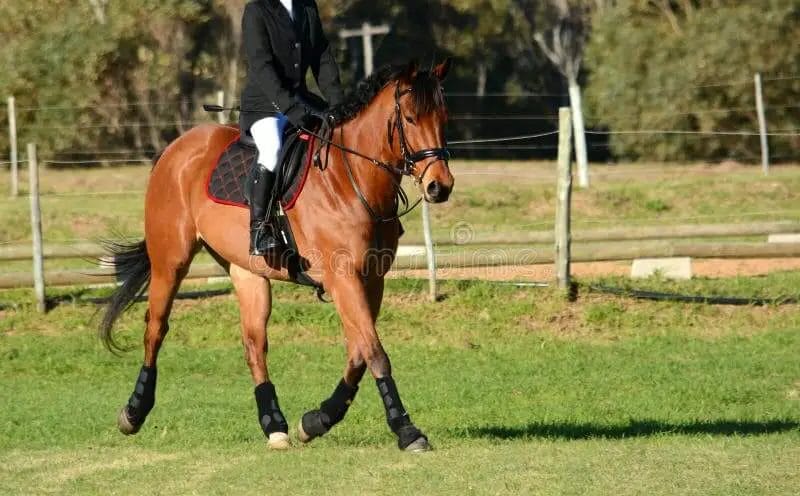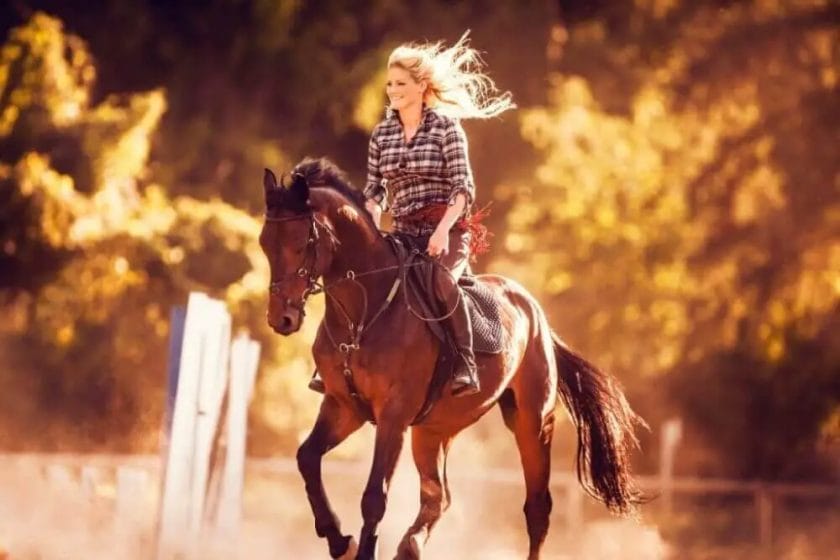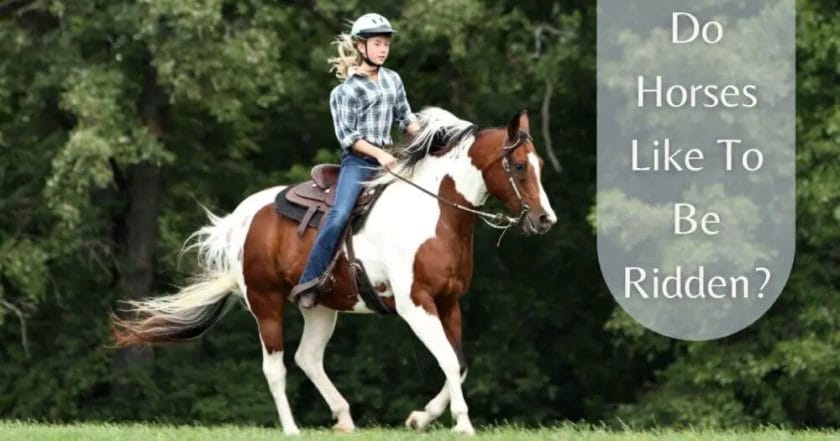Yes, horses are indeed meant to be ridden. Throughout history, horses have been domesticated and trained for various purposes, including transportation, sport, and recreation. These magnificent animals possess incredible strength, agility, and endurance, making them well-suited for carrying humans on their backs. Riding horses not only allows us to form a unique bond with these creatures but also enables us to explore our surroundings and engage in activities such as horseback riding, racing, and equestrian sports.

The Relationship Between Horses and Humans: Riding
When it comes to the relationship between horses and humans, riding plays a vital role. Riding horses has been a common practice for centuries, serving as a means of transportation, sports, and a way to connect with these magnificent creatures. In this section, we will explore the different aspects of riding and its significance in the bond between horses and humans.
Horseback Riding as a Sport
Horseback riding is not only an enjoyable recreational activity but also a highly regarded sport practiced worldwide. Equestrian sports encompass various disciplines, such as dressage, show jumping, eventing, and endurance riding. These sports require skill, precision, and a deep understanding of the horse’s behavior and abilities.
In competitive horseback riding, athletes and their horses work together as a team. Riders must communicate effectively with their horses, conveying subtle cues through body language and rein aids. The horse, in turn, responds to these cues, showcasing its strength, agility, and grace. The bond formed through training and competition is a testament to the unique relationship between horses and humans.
The Therapeutic Benefits of Riding
Beyond the realm of sports, horseback riding also holds therapeutic value. Equine-assisted therapy, also known as hippotherapy, has gained recognition as a valuable form of therapy for individuals with various physical, cognitive, and emotional challenges.
The rhythmic motion of riding a horse stimulates muscle movement and improves balance, coordination, and posture. For individuals with physical disabilities or limited mobility, riding offers a unique opportunity to engage in physical activity and experience the joy of movement. Additionally, the bond formed between the rider and the horse during therapy sessions can promote emotional well-being, boost self-confidence, and foster a sense of connection and trust.
Horses possess an inherent ability to sense and respond to human emotions and non-verbal cues, making them excellent partners in therapeutic settings. The gentle nature of these animals creates a calming and nurturing environment, allowing individuals to develop valuable life skills and overcome challenges while forging a deep bond with their equine companions.
Exploring the Outdoors and Connecting with Nature
Riding a horse provides a unique opportunity to explore the outdoors and connect with nature on a deeper level. Horseback riding allows riders to venture off the beaten path, exploring scenic trails, meadows, and forests that may be inaccessible by other means of transportation.
As riders navigate through nature, they develop a heightened appreciation for the environment and the beauty of the natural world. The rhythmic sound of hooves on the ground, the gentle sway of the horse’s movements, and the fresh air create a sensory experience that fosters a sense of tranquility and serenity.
A Mutual Bond and Trust
Ultimately, riding strengthens the bond between horses and humans through mutual trust and understanding. Horses are highly perceptive animals that can sense their rider’s intentions and emotions. Through consistent training, riders learn to communicate effectively with their horses, establishing a connection built on trust and respect.
As riders develop their skills and gain a deeper understanding of their horses’ behavior, a harmonious partnership forms. This partnership is based on mutual trust, where the horse willingly follows the rider’s guidance and the rider respects and cares for the horse’s needs.
In summary, riding is a fundamental element in the relationship between horses and humans. Whether as a sport, therapy, or a means to connect with nature, riding provides a platform for humans to interact with horses on a deeper level. The bond formed through riding, based on trust, communication, and mutual understanding, is a testament to the profound connection between these magnificent creatures and the people who ride them.

Understanding the Nature of Horses for Riding Purposes
Horses have been companions to humans for centuries. They have served as reliable modes of transportation, loyal partners in sports and competitions, and even therapy animals. Understanding the nature of horses is essential, especially when it comes to riding purposes. By gaining insight into their behavior, instincts, and needs, riders can develop a harmonious relationship with these magnificent creatures.
1. Communication and Body Language
Horses are highly communicative animals. They use a combination of vocalizations, body language, and facial expressions to express their emotions and intentions. As a rider, it is crucial to understand and interpret these signals accurately. Here are some key aspects of horse communication to consider:
- Ear Movements: Horses use their ears as a primary means of communication. They can rotate and position them in different ways to indicate their mood. For example, ears pinned back may indicate aggression or discomfort.
- Body Posture: The position and movement of a horse’s body can provide valuable insights into their emotions. A relaxed posture with a lowered head indicates calmness, while a tense, raised posture may suggest anxiety or fear.
- Tail Swishing: The tail serves as an extension of a horse’s communication repertoire. A relaxed, gently swishing tail often indicates contentment, while rapid or aggressive tail movements can signify agitation.
2. Herd Dynamics and Social Structure
Horses are herd animals by nature, and their social structure plays a significant role in their behavior. Understanding herd dynamics is crucial for riders, as it helps in building trust and establishing leadership. Here are some key points to consider:
- Hierarchy: Horses have a hierarchical structure within their herds, with a dominant leader known as the alpha horse. As a rider, it is essential to establish yourself as a consistent and confident leader for your horse to feel secure.
- Instincts: Horses have strong herd instincts, which means they thrive on companionship and feel more secure when part of a group. Spending quality time with your horse and providing opportunities for social interaction can contribute to their overall well-being.
- Separation Anxiety: Due to their herd instincts, horses may experience separation anxiety when separated from their companions. It is crucial to gradually introduce solitude or ensure they have equine companions to prevent stress and anxiety.
3. Sensory Perception
Horses possess highly developed senses that allow them to navigate and perceive their surroundings effectively. Understanding their sensory perception can help riders create a comfortable and safe riding experience. Here are some important aspects to consider:
- Vision: Horses have remarkable vision, with a wide field of view and the ability to see both monocularly and binocularly. However, they do have blind spots directly behind and directly in front of them. Riders should be mindful of these blind spots and position themselves accordingly.
- Hearing: Horses have excellent hearing capabilities. They can detect high-frequency sounds and are sensitive to sudden noises. Riders should be mindful of their volume and avoid sudden loud noises that may startle the horse.
- Sense of Touch: Horses have a heightened sense of touch, especially in their face, neck, and back areas. Riders should use gentle and consistent cues through their reins and leg aids to communicate effectively with the horse.
Understanding the nature of horses for riding purposes is a continuous journey of learning and adaptation. Each horse is unique, and riders must approach them with patience, empathy, and respect. By developing a deep understanding of their behavior, communication, social structure, and sensory perception, riders can form a strong partnership with their equine companions and enjoy the art of riding to its fullest.

How Riding Horses Boosts Physical and Mental Health
Riding horses is not just an enjoyable activity, but it also has numerous benefits for both physical and mental health. Whether you are an experienced rider or a beginner, engaging in horseback riding can have a positive impact on your overall well-being. In this section, we will explore the various ways in which riding horses can boost your physical and mental health.
1. Physical Fitness
Riding horses requires balance, coordination, and core strength. When you mount a horse and start riding, your body is constantly adjusting to the horse’s movements. This helps improve your balance and stability over time. Additionally, riding horses engages your leg muscles, particularly your inner thighs, quadriceps, and calf muscles. As you give commands to the horse and control its movements, your core muscles are also activated, resulting in a stronger core.
Moreover, horseback riding is a great cardiovascular exercise. It increases your heart rate and improves blood circulation throughout the body. Regular riding can enhance your endurance levels, strengthen your heart, and improve lung capacity.
2. Posture and Flexibility
As you ride a horse, you need to maintain a proper riding posture, which involves sitting tall with your shoulders relaxed and back straight. This posture helps improve your overall posture and spinal alignment. Horseback riding also increases flexibility, especially in your hips, pelvis, and lower back. The rhythmic movements of the horse’s gait gently stretch and loosen tight muscles, reducing stiffness and promoting flexibility.
3. Mental Well-being
Riding horses not only benefits your physical health but also has a positive impact on your mental well-being. It provides a unique opportunity to connect with nature and animals, which can be incredibly therapeutic. The peaceful and serene environment of the outdoors, combined with the rhythmic movements of the horse, can help reduce stress and promote relaxation.
Horseback riding also requires focus and concentration, as you need to be aware of your surroundings, control the horse, and respond to its cues. This mental engagement helps distract from daily worries and negative thoughts, promoting a sense of mindfulness and presence in the moment.
Furthermore, riding horses can boost self-confidence and improve self-esteem. As you develop your riding skills and form a bond with the horse, you gain a sense of accomplishment and mastery. Overcoming challenges and achieving progress in horseback riding can translate into increased self-belief and a positive self-image.
4. Social Interaction
Riding horses is often a social activity that allows you to connect with like-minded individuals who share the same passion. Whether you join a riding club, participate in equestrian competitions, or take lessons with a group, horseback riding provides opportunities for social interaction and building friendships. The supportive and collaborative nature of the equestrian community can provide a sense of belonging and support network.
In summary, riding horses offers a range of physical and mental health benefits. It improves physical fitness, enhances posture and flexibility, promotes mental well-being, and fosters social interaction. Whether you ride for leisure or engage in competitive riding, the joy and therapeutic effects of horseback riding are undeniable. So saddle up and experience the many rewards that come with riding horses, both for your body and mind.
The Art of Horseback Riding: Techniques and Training
Horseback riding is not only a thrilling recreational activity but also an art form that requires skill, technique, and proper training. Whether you are a beginner or an experienced rider, understanding the fundamental techniques and investing in training can greatly improve your riding abilities and overall enjoyment. In this section, we will explore the art of horseback riding, including key techniques and training methods for riders of all levels.
1. Correct Riding Position
A proper riding position is essential for balance, control, and effective communication with your horse. To achieve a correct riding position:
- Sit tall in the saddle, keeping your back straight but relaxed.
- Align your ear, shoulder, hip, and heel in a vertical line.
- Bend your knees and ankles, maintaining a slight contact with the horse’s sides.
- Hold the reins evenly and gently, with soft and supple hands.
Mastering the correct riding position will enhance your stability and enable you to communicate with your horse more effectively.
2. Basic Riding Techniques
There are several fundamental techniques that every rider should learn and practice:
- Walk: The walk is the slowest gait, allowing the rider to establish a connection with the horse and practice basic commands.
- Trot: The trot is a two-beat gait that requires the rider to rise and sit in rhythm with the horse’s movement. It is faster than the walk and provides a smoother ride.
- Canter: The canter is a three-beat gait that is faster and more challenging than the trot. It requires the rider to maintain balance and control while the horse moves in a rhythmic, rocking motion.
- Gallop: The gallop is the fastest gait and should only be attempted by experienced riders. It involves a full suspension phase where all four of the horse’s hooves are off the ground.
- Turning and Steering: Proper turning and steering techniques are crucial for navigating obstacles and maintaining control. Riders should learn to use their weight, leg pressure, and reins to communicate their intentions to the horse.
By mastering these basic riding techniques, you will be able to confidently control your horse and enjoy a smoother ride.
3. Training Programs and Lessons
Investing in a structured training program or taking riding lessons can greatly enhance your skills as a rider. Whether you are a beginner or an advanced rider, a professional instructor can provide guidance, feedback, and personalized training plans to help you reach your goals.
Training programs often include a combination of riding lessons, theory classes, and practical exercises. These programs focus on building a strong foundation, improving technique, and enhancing communication between horse and rider. They may also cover topics such as horse care, grooming, and saddling.
Lessons can be tailored to your individual needs and can be taken on a regular basis to ensure continuous improvement. Experienced instructors can identify areas for improvement and provide targeted exercises to address specific challenges.
4. Advanced Techniques
For those seeking to take their horseback riding skills to the next level, there are advanced techniques that can be explored:
- Jumping: Jumping involves navigating over obstacles such as fences and poles. It requires precise timing, balance, and coordination with the horse.
- Dressage: Dressage is a highly disciplined form of riding that focuses on precision, elegance, and harmony between horse and rider. It involves a series of complex movements and requires advanced communication skills.
- Trail Riding: Trail riding allows riders to explore natural environments and diverse terrains. It requires adaptability and the ability to react to new and unpredictable situations.
These advanced techniques require dedicated training, practice, and guidance from experienced instructors. They can provide an additional layer of challenge and fulfillment for riders who have mastered the foundational skills.
5. Safety Precautions
While horseback riding can be a thrilling and enjoyable activity, it is important to prioritize safety. Here are some essential safety precautions to keep in mind:
- Wear appropriate riding gear, including a properly fitted helmet and sturdy boots with a heel.
- Mount and dismount the horse with caution, following proper techniques to prevent accidents.
- Always warm up and stretch before riding to
FAQs
Are horses meant to be ridden?
Yes, horses have been domesticated for thousands of years and have been traditionally ridden by humans. They are well-adapted for carrying riders and can be trained for various equestrian activities.
Conclusion:
In conclusion, horses are not only meant to be ridden but have been our trusted companions for centuries. Riding horses not only provides us with a means of transportation but also allows us to form a unique bond with these magnificent animals. The history of horseback riding as a sport and a mode of transportation dates back thousands of years, showcasing the deep connection between humans and horses. From the thrill of horse racing to the grace of dressage, riding offers an unparalleled experience of harmony and partnership with these gentle giants. It is through riding that we can truly appreciate the strength, intelligence, and beauty of horses.
Furthermore, horse riding also offers numerous physical and mental benefits for riders. It is a great form of exercise that strengthens our core muscles, improves balance and coordination, and enhances cardiovascular fitness. Riding also promotes mindfulness and a sense of tranquility, as the rhythmic motion of the horse eases stress and allows riders to connect with nature. Whether it’s for sport, recreation, or therapy, horseback riding provides a remarkable experience that brings joy and fulfillment to both riders and horses alike.
